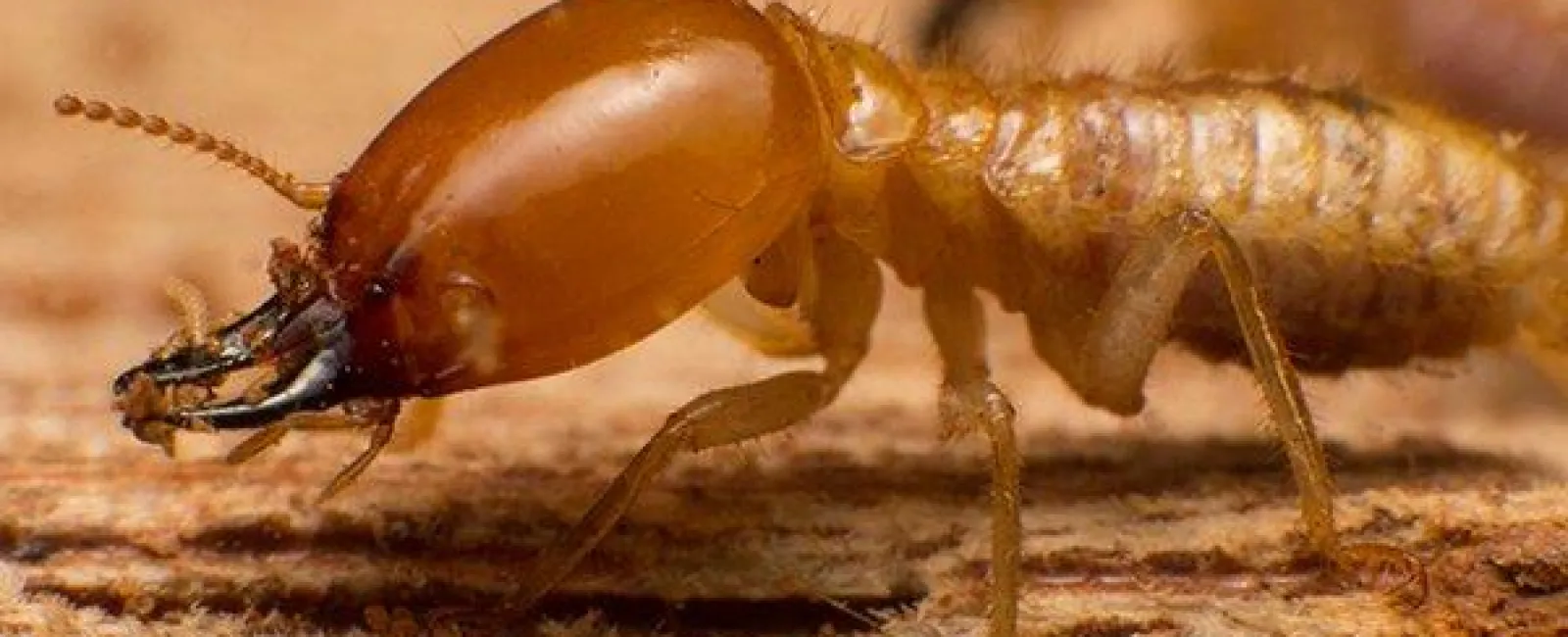As the calendar changes to spring and flowers throughout Centerton begin to bloom, it’s easy to forget about a major pest that comes with this warm weather. Termites become more active as the weather heats up.
While termites will consistently eat wood throughout the year, spring is when they are most active. In the spring, after the last freeze, and usually when the temperature in Arkansas reaches 70 degrees, termite colonies release their swarmers to seek out new nesting locations, which could include your home or property.
What Are Termite Swarmers?
Termites within a colony have three different roles: workers, soldiers, or swarmers. Workers build the colony, repair the nest, and forage for food. Soldiers defend the colony from other pests and intruders. Swarmers are the only termites within the colony that have wings. In the spring they leave their colonies in search of new nesting locations.
Male and female swarmers, attracted by pheromones, will seek each other out and select a new nest location. When this happens, they drop their wings and become king and queen of their own new colony. While the swarmers themselves do not actually eat the wood in your home, their presence should still be a concern for you and a good indication that it is time to call the pest professionals at Alder Pest Control.
Spotting a Termite Swarm Outside
A termite swarm can resemble a group of flying ants and will generally pass very quickly. Swarmers leave their colony and will be carried on the breeze until they land back on the ground. If you see these swarmers flying around outside, know they are looking for a hospitable spot within your home or property to build their nest and start their colony. If you spot a termite swarm near your property, it is important to take quick action to eliminate the new colonies and prevent any damage to your home.
Swarmers in Your Home
While seeing termite swarms outside your home is alarming enough, finding signs of termite swarms within your home should be a major cause for concern. The presence of swarmers in your home is an indication that you may already have a termite problem. Even if you don’t see the swarm inside, signs like discarded wings will alert you to their presence. These wings are dropped by the swarmers after they find a mate and are usually found near entry points like door frames and windows.
Preventing Termite Swarms in Your Home
Termites are estimated to cause more than $5 billion in damage to homes each year, most of which won’t be covered by homeowners insurance. By following these basic steps, you can help keep swarmers from making your home and property their new nesting ground:
- Moisture attracts termites. Make sure all gutters and downspouts are directed away from your home and quickly correct issues like leaks or excess condensation from your HVAC unit.
- Keep woodpiles and firewood at least 20 feet from your home.
- Make sure mulch is at least six inches away from your home’s foundation.
- Remove wood, fallen trees, leaves, and other natural debris from your property.
- Use only treated wood on construction projects.
Following these steps will go a long way to making your home less of a target for swarmers.
Seek Professional Help
When it comes to dealing with termites, sooner is better. If you suspect you have a termite problem, it is always best to contact us at Alder Pest Control for a free inspection of your Centerton home as soon as possible. Our trained technicians will come to your home, talk with you about any signs you may have seen that may indicate the presence of termites, then perform a thorough inspection of your home and property. We will point out any areas of concern, and help you develop a termite control services and protection plan that best fits your needs.

